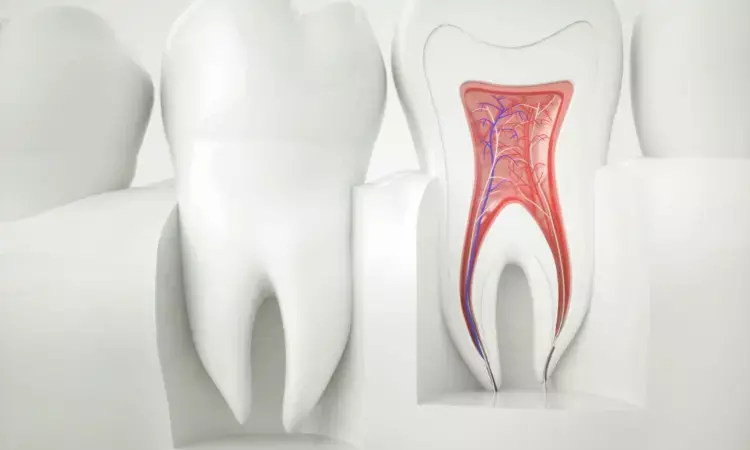- Home
- Medical news & Guidelines
- Anesthesiology
- Cardiology and CTVS
- Critical Care
- Dentistry
- Dermatology
- Diabetes and Endocrinology
- ENT
- Gastroenterology
- Medicine
- Nephrology
- Neurology
- Obstretics-Gynaecology
- Oncology
- Ophthalmology
- Orthopaedics
- Pediatrics-Neonatology
- Psychiatry
- Pulmonology
- Radiology
- Surgery
- Urology
- Laboratory Medicine
- Diet
- Nursing
- Paramedical
- Physiotherapy
- Health news
- Fact Check
- Bone Health Fact Check
- Brain Health Fact Check
- Cancer Related Fact Check
- Child Care Fact Check
- Dental and oral health fact check
- Diabetes and metabolic health fact check
- Diet and Nutrition Fact Check
- Eye and ENT Care Fact Check
- Fitness fact check
- Gut health fact check
- Heart health fact check
- Kidney health fact check
- Medical education fact check
- Men's health fact check
- Respiratory fact check
- Skin and hair care fact check
- Vaccine and Immunization fact check
- Women's health fact check
- AYUSH
- State News
- Andaman and Nicobar Islands
- Andhra Pradesh
- Arunachal Pradesh
- Assam
- Bihar
- Chandigarh
- Chattisgarh
- Dadra and Nagar Haveli
- Daman and Diu
- Delhi
- Goa
- Gujarat
- Haryana
- Himachal Pradesh
- Jammu & Kashmir
- Jharkhand
- Karnataka
- Kerala
- Ladakh
- Lakshadweep
- Madhya Pradesh
- Maharashtra
- Manipur
- Meghalaya
- Mizoram
- Nagaland
- Odisha
- Puducherry
- Punjab
- Rajasthan
- Sikkim
- Tamil Nadu
- Telangana
- Tripura
- Uttar Pradesh
- Uttrakhand
- West Bengal
- Medical Education
- Industry
Breakthrough in Dentistry: AI model identifies root canal morphology in fused-rooted mandibular second molars in new research

China: In a significant stride for dental diagnostics, researchers have unveiled a pioneering deep learning algorithm capable of identifying root canal morphology in fused-rooted mandibular second molars directly from X-ray images. This breakthrough holds immense promise for improving the accuracy and efficiency of root canal treatments, a cornerstone of modern dentistry.
A recent study published in the Journal of Endodontics found convolutional neural networks (CNNs) more effective than endodontic residents in identifying the three-dimensional root canal morphology of mandibular second molars (MSMs). The result indicates that CNNs can employ two-dimensional images effectively in aiding three-dimensional diagnoses.
Root canal treatment, also known as endodontic therapy, involves meticulously cleaning and shaping the intricate network of root canals within a tooth to alleviate pain and prevent infection. However, the fused root presence complicates this process, often leading to diagnostic errors and suboptimal treatment outcomes.
Understanding the intricate anatomical morphology of fused-rooted MSMs is important for root canal treatment. Weiwei Wu, Huazhong University of Science and Technology, Wuhan, China, and colleagues utilized a deep learning approach to identify the three-dimensional root canal morphology of MSMs from two-dimensional X-ray images.
For this purpose, the researchers included 271 fused-rooted MSMs. Micro-computed tomography (micro-CT) reconstruction and two-dimensional X-ray projection images were obtained. The ground truth of three-dimensional root canal morphology was determined through micro-CT images, classified into symmetrical, merging, and asymmetrical types. The researchers employed traditional augmentation techniques from the Python package Augmentor and a multi-angle projection method to amplify the X-ray image dataset.
The team conducted root canal morphology identification. The classification results from convolutional neural networks (CNNs) were compared with endodontic residents.
The following were the key findings of the study:
· The multi-angle projection augmentation method outperformed the traditional approach in all CNNs except for EfficientNet-b5.
· ResNet18 combined with the multi-angle projection method outperformed all other combinations, with an overall accuracy of 79.25%.
· In specific classifications, 81.13%, 86.79%, and 90.57% accuracies were achieved for merging, symmetrical, and asymmetrical types, respectively.
· CNNs surpassed endodontic residents in classification performance; the average accuracy for endodontic residents was only 60.38%.
In conclusion, utilizing advanced deep learning techniques, the study delved into the root canal morphology of fused-rooted mandibular second molars using two-dimensional X-ray images.
"The model based on convolutional neural networks (CNNs) excelled in identifying symmetrical, merging, and asymmetrical root canal types, outperforming endodontic residents by a significant margin," the researchers wrote.
Researchers are optimistic about further refining the algorithm's performance and exploring its application to other facets of dental diagnostics and treatment planning. With continued collaboration between dental professionals and AI experts, the future of dentistry promises to be brighter than ever, offering enhanced solutions to address the complexities of oral health with unprecedented accuracy and efficiency.
Reference:
Wu W, Chen S, Chen P, Chen M, Yang Y, Gao Y, Hu J, Ma J. Identification of root canal morphology in fused-rooted mandibular second molars from X-ray images based on deep learning. J Endod. 2024 May 29:S0099-2399(24)00338-8. doi: 10.1016/j.joen.2024.05.014. Epub ahead of print. PMID: 38821263.
Dr Kamal Kant Kohli-MBBS, DTCD- a chest specialist with more than 30 years of practice and a flair for writing clinical articles, Dr Kamal Kant Kohli joined Medical Dialogues as a Chief Editor of Medical News. Besides writing articles, as an editor, he proofreads and verifies all the medical content published on Medical Dialogues including those coming from journals, studies,medical conferences,guidelines etc. Email: drkohli@medicaldialogues.in. Contact no. 011-43720751


